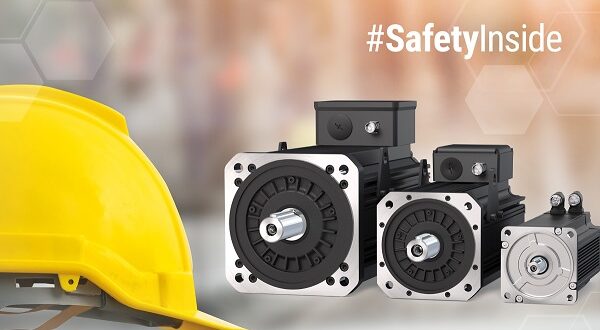In plant and machine manufacturing, safety is a high priority. In order to fulfill this requirement, Brusatori Electric Motors (part of the KEB Group) has introduced a new mechanical mounting system for safe encoders for its DL4 series of servomotors that meets the requirements with safety functionalities and can assume Functional Safety functions together with the approved drive system. The functionalities then depend on the encoder type used.
What is functional safety based on?
“Essentially, this can be answered by looking at three basic aspects: the degree of reliability in relation to the product design, limitations in the architecture of the object that affects its safety level, and the probability of dangerous or accidental failures,” says Luca Banfi, Head of Sales at Brusatori Electric Motors.
Functional Safety plays a crucial role in the KEB portfolio. Therefore, Brusatori Electric Motors has now also developed the powerful DL4 series with safe encoders as part of its wide range of motors for Functional Safety. The DL4 servomotors are designed for very high torque requirements and are characterised by their compactness and high torque ratings.
“One advantage is that the DL4 servomotors can be customised to suit individual requirements due to different shaft designs and various types of feedback,” explains Banfi. The DL4 servomotors are available with torque ratings from 5 Nm to 530 Nm and are developed, assembled and tested in Italy.
Safety Integrity Level
Failures in control systems are often associated with risks. For this reason, legal requirements exist and compliance with these can minimise the damaging effects of a system failure. Specifically, several safety integrity levels (SIL) are defined. These specify the degree of reliability that a safety system must achieve in order to minimise the risk of an accident during its use. SIL therefore makes it possible to quantify the degree of reliability achieved by each object that performs a safety-relevant function. The higher the reliability, the greater the ability to fulfil safety-critical functions or the availability of machines or systems.
Four encoders with safety functionality are planned for the introduction of the functional safety features, to which a new resolver will be added. In addition, the nameplate will be labelled ‘FS’ (Functional Safety). The introduction of this design within the established product range enables the KEB Group to expand its product range with drives and brakes, as well as integration with automation PLCs.
 Engineer News Network The ultimate online news and information resource for today’s engineer
Engineer News Network The ultimate online news and information resource for today’s engineer






